


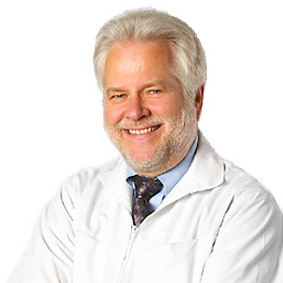
by Carl Sherman
February 6, 2019
| Various viruses from the Herpesviridae family (seen using an electron micrograph), including varicella-zoster (chickenpox), and herpes simplex type 1 and 2 (HSV-1, HSV-2) Source: CDC |

Suddenly, it seems, Alzheimer’s research is crawling with microbes.
An outlandish metaphor, perhaps, but the growing attention to viruses (and to a lesser extent bacteria) in the search for the origins of Alzheimer’s disease (AD) is hard to ignore. On the cellular, molecular, and population level, recent research has aroused excitement. Clinical trials are underway.
The concept is not new. More than a century ago, Alois Alzheimer considered a role for infection in the disease that bears his name. In the 1990s, Ruth Itzhaki of Oxford and University of Manchester in Britain demonstrated the presence of herpesvirus DNA in the post-mortem brains of the elderly and of people with AD, especially around amyloid deposits.
Other investigators have found evidence implicating bacteria, particularly spirochetes (including the pathogen responsible for Lyme disease) and chlamydia pneumoniae. One recent paper suggested a pathogen involved in chronic gum disease plays a role.
Still, “Everyone laughed at the idea or was hostile,” says Itzhaki. “It’s been a constant battle for over 25 years.”
Researchers have resisted the challenge to the long-dominant amyloid cascade hypothesis of AD because it questions their own work, she believes. “And most don’t know much about viruses, particularly the concept of viral latency—that people can be infected but not affected.”
Such latency is evident in herpesviruses, the microbes for which AD-link evidence is strongest. Almost everyone is infected with HSV1, which is responsible for cold sores, and the virus is present in normal as well as AD brains. The difference, Itzhaki conjectures, lies in periodic reactivation due to stress or immunosuppression, which allows HSV to kill brain cells. “Damage accumulates,” she says, “and leads to AD.” Carriers of ApoE4, the strongest genetic risk factor for AD, seem particularly prone to HSV1 reactivation, she observes.
Lately, however, “far more people have come into the field [of microbe-AD research],” Itzhaki says. “It started happening about eight years ago, and the number of researchers has increased gradually.” In 2017 and 2018, papers from Taiwan provided “the first population-level evidence for a link between herpes infection and senile dementia,” she wrote in a commentary in the Journal of Alzheimer’s Disease. “And last June, two papers that augment some of our data caught the public eye.”
Neuroscientists whose AD research is unrelated to microbes see a similar trajectory. “I remember hearing about this work back in the late 1990s,” recalls Robert Vassar, professor of cellular and molecular biology at Northwestern University. “I didn’t think much of it at the time. It seemed farfetched.”
More recent research, he says, is “pretty compelling.... In retrospect, if you look at the progression of these studies, there’s certainly a lot of circumstantial evidence supporting the microbial hypothesis.” Although much more research needs to be done, “it’s paradigm-shifting work,” he says.
To Eliezer Masliah, director of the division of neuroscience at the National Institute of Aging (NIA) and a member of the Dana Alliance for Brain Initiatives, growing interest in microbes reflects, in part, “more intense questioning of traditional amyloid-tau cascade hypotheses. There’s a search for alternatives.”
There is also “new, very provocative data coming out in recent years, which has contributed to heightened interest,” he says. He, like Itzhaki, points to two papers published in Neuron in July 2018.
“All the other studies were more correlational, descriptive, equivocal,” says Masliah. “These are looking at the issue in a more mechanistic way.”
In one paper, which was funded by the NIA, researchers at Icahn School of Medicine at Mt. Sinai and at Arizona State University analyzed genomic, transcriptomic, proteomic, and histopathological data from postmortem brains of people with signs of AD and others without. Applying advanced computation methods to tissue from three large brain banks, they explored the interaction of viral DNA and RNA fragments with neuronal molecular systems.
They found that human herpesviruses 6 and 7(HHV6,7) were more common in brains that had signs of AD than in non-AD brains, and that viral levels correlated with the severity of dementia. These viruses, moreover, appeared to have an effect on molecular processes in neurons. In particular, they altered the expression of genes that have been implicated in AD, and influenced pathways involved in amyloid production.
Of note, points out Mack Mackiewicz of NIA, the investigators used an “unbiased approach”: they were not testing a hypothesis involving a specific virus, but looking more widely for clues to molecular processes underlying AD neuropathology that might suggest new drug targets. The HHV6-7 connection emerged from the data.
Studies reported in the other paper demonstrated that introducing herpesviruses into lab dishes of neurons and into the brains of genetically modified mice triggers the formation and deposition of beta-amyloid (Aβ), in forms resembling the characteristic plaques of AD.
Additional experiments described the subcellular process by which Aβ protected the mice against HSV1-related encephalitis and inhibited viral growth in cell culture.
The study came out of the Harvard laboratories of Rudolph Tanzi and Robert Moir, adding a new chapter to 10 years of research that gave rise to what they call the antimicrobial protection hypothesis of Alzheimer’s disease.
Tanzi and Moir have accumulated evidence that Aβ, long thought to be a “functionless” protein, is actually an antimicrobial peptide (AMP), one of a class of molecules important in innate immunity. Against certain pathogens, “Aβ is more powerful than penicillin,” says Tanzi, professor of neurology at Harvard and also a member of the Dana Alliance.
AMPs, “the most primitive, ancient immune host response,” protect against unwelcome organisms and substances by forming extracellular traps to bind and sequester them. “That’s what plaques are in the brain,” he says.
The hypothesis accords microbes a key if limited role in AD; their presence triggers the generation of beta amyloid as a defensive measure. Amyloid induces the production of neurofibrillary tangles, which kill neurons and activate microglia. As neuroinflammation gathers steam, neurons die. “Amyloid is the match, tangles are brush fires, neuroinflammation is a forest fire,” says Tanzi. “Microbes are what’s lighting the match.”
In this formulation, says Tanzi, AD is an “auto-innate immune disorder,” in which amyloid takes the place of antibodies in conventional autoimmune disorders.
The 2018 Neuron paper provides a clear, graphic instance of the “seeding” process that begins the cascade.
The theory can account for the fact that a broad spectrum of bacteria and viruses have emerged as possible AD factors. “We don’t have a favorite microbe; we’re saying a bunch of different ones may be involved,” Tanzi says. There’s a place for the amyloid cascade hypothesis as well, as one step along the road to AD. Since innate immunity is a general reaction to foreign material, the theory suggests a mechanism by which other factors might raise AD risk, such as fine particulate air pollution. (see “Air Pollution Linked to Higher Risk of Dementia”)
Even as the evidence for an AD-microbe link grows stronger, “we are still struggling with ideas of cause and effect,” cautions Mackiewicz. “It is not known whether microbes are causative or a passenger of the AD process.” Long-dormant viruses may be activated by a disease process already underway, in other words, rather than a factor in initiating it.
The role of viruses and other microbes, ultimately, must be understood in the context of other factors, Masliah says. “Aging, neuropathology, the amyloid cascade, certain genotypes—what we’ve learned is that all things leading to the pathogenic process of AD are synergistic; that multiple hits, multiple steps are involved in an interactive process.”
May 3, 2018
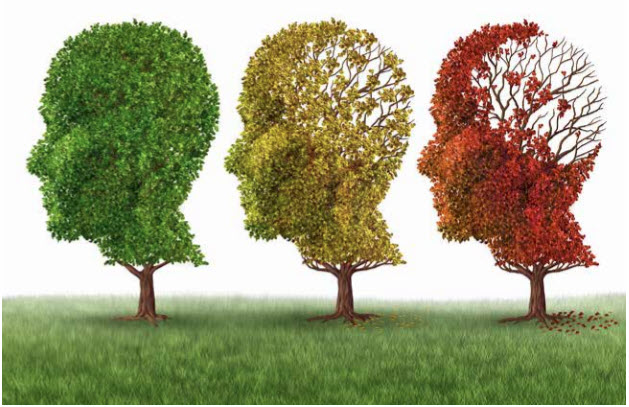
When I started in neuroscience, the dogma was that you were born with all the neurons you were ever going to have, and it was all downhill from there as you aged. About 20 years ago, this belief started to change as investigators found evidence of newly formed neurons, particularly in the cerebellum and the hippocampus—but only in younger brains. Thus, the new dogma was that the ability to form new neurons gradually diminished as you got older, until it vanished completely. Most of this early work was first completed in animal studies, then later reproduced in humans.
Now the dogma is being challenged again. Maura Buldrinis and J. John Mann of Columbia University studied the brains of 28 healthy individuals, ranging from 14 to 79-years-old. Subjects were carefully screened to make sure they were free of disease processes that might alter neurogenesis (the formation of new neurons). The investigators concentrated on the hippocampus, a place in the brain they felt more likely to find neurogenesis. In this hippocampal tissue they found thousands of immature and newly formed neurons in all participants. There was no significant drop-off with age.
However, there were other changes in the older brains. The supporting vascular structure was less developed. Thus, these new neurons might be relatively starved for oxygen and other nutrients. There were also lower levels of proteins needed for developing plasticity as neurons mature. These latter two findings suggest that the new neurons may be there in older brains, but they are less able to become functional.
How added neurons take on functions in the recipient brain is not well understood. It is not like what occurs when you add liver cells to a liver, or muscle cells to muscle. In those organs, most cells are very similar in their shapes and functions. In the brain, cells are remarkably diverse. The big divisions are between input cells, which take in sensory information, process it, and then deliver that information to other sensory cells, or to output cells that provide messages to motor cells, glands, and skin. In many regions of the brain, neurons function in complex interactive circuits, such as what occurs in the basal ganglia or cortex. How do you introduce an outside neuron to one of these circuits? Is the development of the added neuron influenced by its new neighbors? If some of the cells of the circuit are motor output cells, can added neurons take on those properties?
The answers to these questions, and a myriad of other questions, are approachable and will be known in the next few years.
Guy McKhann, M.D., is professor of neurology and neuroscience at the Zanvyl Krieger Mind/Brain Institute, Johns Hopkins University, Baltimore. He serves as scientific consultant for the Dana Foundation and scientific advisor for Brain in the News.
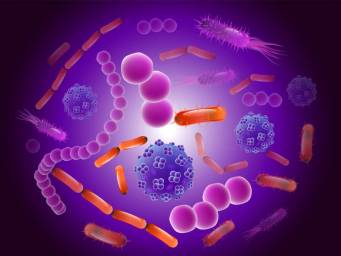
IN THE NEWS: Immune system vs. gut bacteria: How vitamin A 'keeps the peace' with New findings about the role of vitamin A in mediating the relationship between gut bacteria and the immune system may prove "critical" for devising new therapies for autoimmune conditions, such as Crohn's disease, ulcerative colitis, and other inflammatory diseases that affect the intestine. The gut bacteria are known to play a crucial role in keeping us healthy. Research has shown that the trillions of friendly microorganisms hosted by our guts can keep us lean, young, and healthy — both in body and mind. But how do gut bacteria do this? One answer involves the immune system. Various studies have been slowly unraveling the complex relationship between gut bacteria and immunity. They suggest that the interactions between the host's gut and the bacteria that colonize our intestines help control how our body responds to illness. New research may have found an answer: vitamin A. A team of scientists, led by Shipra Vaishnava, an assistant professor of molecular microbiology and immunology at Brown University in Providence, RI, found that moderate levels of vitamin A in the intestine prevent the immune system from becoming overactive. Note: doing the dry winter the demand for vitamin A rises sharply. To maintain a healthy respiratory system along with a healthy immune system we recommend vitamin A and D be taken throughout the winter months. Probiotics are also helpful as this article indicates.

WELLNESS:Marvelous for Constipation, Almost Instantly Softens Stools Estimates suggest up to 20 percent of the general population experience chronic constipation, characterized by hard, dry and difficult to pass stools, and/or having less than three bowel movements per week. To prevent constipation, make sure you’re drinking enough water each day, and increase your fiber intake to 25 to 50 grams per 1,000 calories consumed. Four foods shown to have a beneficial impact on chronic constipation are fermented vegetables, artichoke, kiwi and kefir. Certain supplements can also help improve your regularity, including magnesium, organic psyllium husk, enzymes and probiotics. In your bathroom, consider using a foot stool to enhance elimination, and installing a bidet to optimize your hygiene and avoid the pain of wiping with toilet paper, which can aggravate many bowel-related problems.

If you've got allergies, you know the deal: For part of the year, you can venture outdoors breathing easily and seeing clearly. For the other, you're stuck scratching your itchy eyes, sneezing constantly, and blowing your nose like crazy. Turns out, there’s a super-potent steroid shot that offers relief from what feels like a truckload of pollen to the face. And only a few hours later, you’ll be breathing better! Sounds promising, right? First things first: You get allergies when your body overreacts to a substance (like pollen or cat dander) in an attempt to protect you from it. (Cue the congestion and watery eyes.) A steroid shot is an aggressive remedy used to calm that response, says Purvi Parikh, M.D., an allergy and immunology clinical assistant professor at NYU Langone Health. But while these steroid shots are extremely effective, they should only be administered "when all else fails," warns Parikh. Cortisone can weaken your immune system, which could worsen an existing infection or make you more likely to get new infections. You should not use cortisone if you have a fungal infection. Some less serious side effects of cortisone may include: Acne, dry skin, or thinning skin, Bruising or discoloration of

FUNNY BONE: I eat my peas with honey. I've done it all my life. It makes the peas taste funny. But it keeps them on the knife!@@ Which word in the dictionary is spelled incorrectly? Incorrectly@@ If your parents never had children, chances are you won't either.@@ Patient: Doctor, I think I need glasses. Teller: You certainly do! This is a bank.@@ Doctor: Nurse, how is that little girl doing who swallowed ten quarters last night? Nurse: No change yet.@@ What’s the difference between a general practitioner and a specialist? One treats what you have, the other thinks you have what he treats.@@ Funny Doctors’ Notes (These are sentences exactly as typed by medical secretaries) Patient has chest pain if she lies on her left side for over a year.--On the second day the knee was better and on the third day, it disappeared.--The patient has been depressed since she began seeing me in 1993.--Discharge status: Alive, but without my permission.--While in ER, Eva was examined, x-rated and sent home.--Patient has two teenage children, but no other abnormalities.--The patient was in his usual state of good health until his airplane ran out of fuel and crashed.
Courtesy of:
John H. Keefe III, D.C.
(918) 663-1111
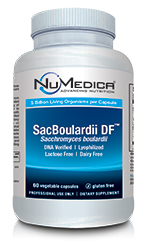
IN THE NEWS: Can a Healthy Gut Microbiome Suppress Autoimmune Diseases? Medical News Bulletin October 2,

WELLNESS: Why Paying for Nutrition Saves Money on Health Care The foods we eat play a central role in our health. The epidemics of our time—obesity, heart disease, type 2 diabetes—are intimately tied to unhealthy patterns of eating. But eating healthy is also expensive, making it particularly challenging for


FUNNY BONE: My wallet is like an onion. When I open it, it makes me cry...@@Does

Protecting the brain
Alzheimer’s disease is a side effects of the aging process. In fact, the most common view globally (scientific or not) is that aging - the process of getting older - naturally causes changes in the brain and central nervous system that lead to conditions such as memory loss and dementia.
These perceptions of aging leave our elders (and us) with little to look forward to later in life. It’s not that surprising that depression statistics among the elderly are high when most people expect aging to cause irreversible brain damage. They believe this brain damage will initially lead to forgetfulness and erratic, odd behavior. Then, it will inexorably strip your very identity away from you just before you die an idiot’s death without any dignity.
In line with this new paradigm, we’ve developed a pharmaceutical-free diet and lifestyle plan that is complete with recipes and advice based on the latest scientific research findings. It is created to prevent, halt, or combat degenerating conditions such as Alzheimer’s disease or dementia that commonly arise for people as they age.
Our brains can adapt and respond to our environments by appropriately changing its structure and function. This fantastic ability is called neuro or brain plasticity. Our ability to learn how to play a musical instrument, for example, relies on the brain’s ability to grow neurons into linked interconnected chains called ‘neuro-nets.’ Neuro-nets are established through the repetitions of daily practice. This means, the brain actually changes shape as you learn.
Dementia Risk Factor Matrix
Very Likely Advanced age, family history (Alzheimer’s, Parkinson’s), apolipoprotein E-4, Down’s syndrome, head trauma (10x risk w/ApoE4) depression, reduced blood flow, stroke, estrogen imbalance, poor word fluency
Likely Emotional stress, toxic damage, alcohol abuse, nutrient deficiencies, transmitter deficits, metabolic deficits, under activity, lower educational level, occupational electromagnetic exposure
Possible Aluminum exposure, latent viruses, sugar consumption, olfactory deficit, coronary artery disease
Drugs are bad for the brain
For the first time, researchers at Northwestern University have analyzed the relationship between casual use of marijuana and brain changes – and found that young adults who used cannabis just once or twice a week showed significant abnormalities in two important brain structures.
Elderly hospital patients who are given a common type of sedative to help them sleep have an increased risk of symptoms of delirium. 70% increased risk of symptoms of delirium, 300% increase in inattentive,
300% increase in altered consciousness, 500% of disorganized speech. These drugs block the actions of an important brain chemical called acetylcholine that can cause hallucinations, among other symptoms archives of internal medicine 2001; 161:2091-2097
Antihistamines linked to Alzheimer’s
Antihistamines drugs block the nervous system neurotransmitter called acetylcholine. Those suffering from Alzheimer’s disease typically have a marked shortage of acetylcholine. Examples include nighttime pain relievers, antihistamines, and other sleep aids, such as: Excedrin PM, Tylenol PM, Nytol, Sominex, unisom, Benadryl, Dramamine.
There are also many different physical and psychological factors that can affect the way our memory functions: • Anxiety • Stress • Depression • Infection • Thyroid imbalance • Dehydration • Nutritional deficiencies such as insufficient Magnesium, Zinc, Vitamin B6 & B12, and folate • Alcoholism • Medication • Substance abuse • Lack of exercise / sedentary lifestyle
A general strategy for better brain health would include the five laws of health-diet, exercise, rest and relaxation, positive mental and spiritual attitude and a healthy nervous system.
Nutritional approach in rebuilding brain function.
Extra-virgin olive oil, coconut oil, Acai Berry, Aronia Berry, Blackcurrant, blackberry, blueberry, cherry, cranberry, elderberry, grape or grape seed, pomegranate, strawberry, Leafy Greens and Cruciferous Vegetables, rosemary, lemon balm, Panax Ginseng, Ashwagandha, Ginkgo biloba, Curcumin, Green Tea, Cinnamon, Dark Chocolat, Alpha Lipoic Acid (ALA),Acetyl-L-Carnitine (ALC),Vitamin D ,Vitamins C and E, fish oils, Vinpocetine, Phosphatidylserine, Vinpocetine, Magnesium, B Vitamins, Niacin, Coenzyme Q10 (Co-Q10),N-acetyl cysteine, Luteolin, Wild Green Oat Extract, Nicotinamide Riboside,and Bacopamonnieri.
Work at reducing inflammation in the body, ask for the anti-inflammatory food list.
Coconut oil is a brain fuel
The damage done to your brain from the wrong foods and from unbalanced insulin and leptin levels begins decades before you show any of the telltale signs of Alzheimers. Coconut oil or MCT’s should be taken in the morning. It takes a minimum of 3 hours for the oil to convert to ketones and reach your brain. You should repeat the dose of 4 tablespoons of coconut oil twice a day. Gradually add more coconut oil every few days until you are able to tolerate 4 tablespoons.
When digested, MCTs travel directly to the liver where they are synthesized into keytone bodies. These chemical compounds have a positive effect on several brain disorders, most notably – epilepsy & Alzheimer’s (the most common form of dementia.) High concentrations of keytone bodies in the blood have been shown to reduce seizures in children with drug-resistant epilepsy. Keytone bodies also provide an alternate source of energy for cells in the brain which have lost the ability to process glucose, one of the main causes of Alzheimer’s.
Week of: Monday Feb. 11, 2019
John H. Keefe III, D.C.
(918) 663-1111

IN THE NEWS: Steps to keep your brain healthy “Research summarized in the advisory convincingly demonstrates that the same risk factors that cause atherosclerosis, are also major contributors to late-life cognitive impairment and Alzheimer’s disease. By following seven simple steps — Life’s Simple 7 — not only can we prevent heart attack and stroke, we may also be able to prevent cognitive impairment,” said vascular neurologist Philip Gorelick, M.D., M.P.H., the chair of the advisory’s writing group and executive medical director of Mercy Health Hauenstein Neurosciences in Grand Rapids, Michigan. Life’s Simple 7 outlines a set of health factors developed by the American Heart Association to define and promote cardiovascular wellness. Studies show that these seven factors may also help foster ideal brain health in adults

WELLNESS: Croup is mainly characterized by an infection of the child’s larynx (voice box) and trachea (windpipe), which are the upper and lower parts of the breathing tube connecting the mouth to the top of the lungs. Croup is common among infants and toddlers who are 6 months to 3 years old. Most croup cases occur in 1-year-old children. However, babies as young as 3 months old can develop croup, too. The same goes for older children up to 15 years old and adults (albeit rare). A viral infection is considered to be the most common cause of croup, usually the parainfluenza I virus. Children or babies can develop croup when they inhale respiratory droplets that are either coughed or sneezed out by infected people from their surroundings. Fluids: besides a cool mist humidifier as prevention, A well-hydrated patient can recover more quickly. Try increasing liquid intake to the maximum. Breast milk and water are highly recommended for infants, while older children can drink water, soups or bone broth. Other good options include organic vegetable broth, herbal teas, fresh lemonade or fruit pulp. Raw honey: This is an effective croup cough treatment, since it may reduce bedtime coughing and induce sleep. However, raw honey mustn't be given to children less than a year old because of the risk for botulism (a rare but serious disease triggered by toxins from the Clostridium botulinum bacteria20). Lemon tea: It can help alleviate throat pain and stimulate the immune system. Mix some ginger with the juice of half a lemon and add to hot water. Elderberry flowers: These can assist in boosting the immune system, alleviating respiratory problems and helping relieve congestion. Horsemint: Also known as bee balm, horsemint can help relieve severe cough. Boil two to three horsemint leaves in a cup of hot water and have the patient sip the tea two to three times daily to improve breathing. Wild cherry bark: This herb can help soothe throat irritation and deliver anti-inflammatory properties. Wild cherry bark can be inhaled or consumed as tea. Betel leaves: A child can get relief from croup by consuming tea made from betel leaves two to three times a day. Say 'No' to Steroids as a Croup Treatment.

CHIROPRACTIC

FUNNY BONES: You can't be late until you show up.@@ I'm objective; I object to everything.@@ When there's a will, I want to be in it!@@ Vegetarian: Indian word for BAD HUNTER!@@ Campers: Nature's way of feeding mosquitoes.@@ If I agreed with you, we'd both be wrong.@@ Some people hear voices.. Some see invisible people.. Others have no imagination whatsoever.@@ I never forget a face, but in your case I'll be glad to make an exception. ~ Groucho Marx@@ We never really grow up, we only learn how to act in public.@@ Age mellows some people; others it makes rotten.@@ The secret of staying young is to live honestly, eat slowly and lie about your age. - Lucille Ball@@ When I was young I was called a rugged individualist. When I was in my fifties I was considered eccentric. Here I am doing and saying the same things I did then and I'm labeled senile. - George Burns@@ Children really brighten up a household. They never turn the lights off.@@ In general my children refuse to eat anything that hasn't danced in television. Erma Bombeck
Courtesy of:
John H. Keefe III, D.C.
(918) 663-1111

IN THE NEWS: The opioid crisis is worsening. Over 42,000 Americans died of an opioid overdose in 2016, and government and public health officials are scrambling to find effective ways to reverse this frightening trend. Note: government research shows that chiropractic care along with acupuncture and other natural techniques can control most pain. It’s only due to politics in healthcare that these are not fully utilized and so people keep dying. There is a very simple solution to the opioid crisis. Try a natural approach first then and only then should medication be considered.
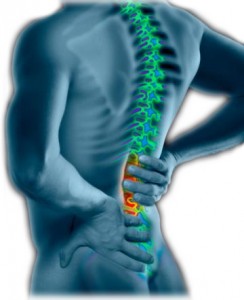
CHIROPRACTIC: Keep Your Spine in Shape Your spine is the backbone of your entire body – literally and figuratively. That means poor spine health can negatively impact you from head to toe. How can you keep your spine in shape? Let's learn more about this critical anatomical structure and take a look at some of the simple strategies you can employ to ensure a healthy spine and a healthy body. Exercises First, a strong core supports the spine, whereas a weak core can lead to pain and injury. To build the core, think planks, bent-leg knee raises, stability ball exercises, ab curls, medicine ball slams and other exercises that strengthen the core muscles (remembering to keep your spine protected at all times by avoiding rounding the
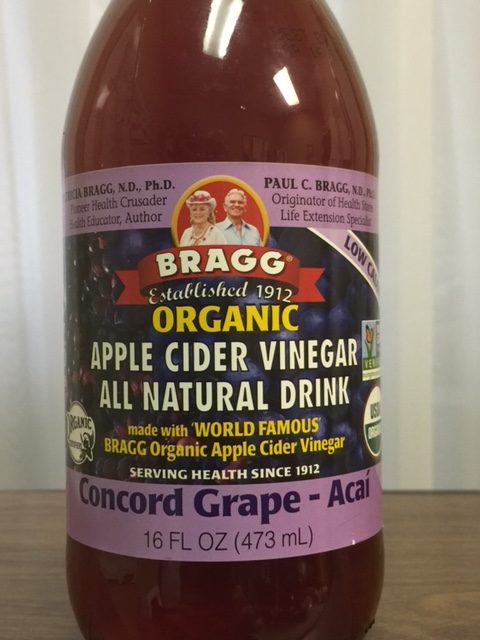
WELLNESS: 3 Ingredient Daily Drink Tonics for Your Best Health Here are two three-ingredient concoctions that may just provide that miracle of health and healing you’ve been searching for. Apple cider vinegar, honey and cinnamon super syrup. While very simple to make and with no rare or hard-to-find ingredients, this health tonic is wide-ranging in the benefits it bestows upon those who drink it. It can relieve constipation, reduce inflammation, support kidney function, promote heart health, prevent or fight urinary tract infections, protect against bacterial, fungal or viral attack and keep the common cold at bay. As you can see, it is a heavy-hitter in the realm of health care, helping to boost your immune system and support strong heart and organ function. The key to success with this health tonic is to source only the highest quality ingredients. Now is not the time to worry about your wallet at the supermarket or health-food store. It’s absolutely a worthwhile health investment to buy high-caliber ingredients. With this in mind, here are the qualifications for each ingredient: The apple cider vinegar must be raw and organic. Raw means it still contains the active cultures that support your gut biome and bolster your immune system. Organic means the apples from which it was made are not coated in pesticides, heavy metals and toxins, which would then pass into your system and offset all your hard work. The honey must be raw, preferably organic. Organic just implies the bees have not pollinated flowers or plants which are treated with pesticides, herbicides or other nasty applications. This ensures you get only the highest quality honey from known sources. Raw means that the honey has not been pasteurized, a process to increase its shelf life but can render it biologically inactive by killing off the active enzymes in the honey — the reason it’s such a potent ingredient. And of course, your cinnamon should also be organic. As with our other ingredients, buying non-organic cinnamon means you’re at greater risk of ingesting harmful toxins and heavy metals, which can negatively impact your health. Combine two cups of the apple cider vinegar, one cup of honey and two teaspoons of cinnamon in a jar and stir/shake well. Store your super syrup in a cool dry area, keeping in mind that placing it in the fridge will cause the honey to harden and settle to the bottom. A couple of sips in the morning, and again at night are enough to ensure you enjoy all of the nurturing benefits of this tonic. Warm water, lemon and apple cider vinegar health-ade. That’s right, we’re once again employing the health properties of our friend apple cider vinegar — it’s just that good! This time it’s a simple concoction you can make in seconds if you have the ingredients ready; all you need is some warm or room temperature filtered or mineral water, raw organic apple cider vinegar and half an organic lemon. Simple as that. Drinking this each morning, as soon as you wake up and before you put anything else in your stomach, is an excellent way to start your day. It stimulates digestion, expels toxins from the liver and supports your digestive enzymes for a busy day ahead. Fill a glass with warm water, squeeze in half a lemon, and pour in a rough teaspoon of apple cider vinegar. Sip it slowly and let it work its magic! These health tonics work best if you keep at it — make sure you drink them as directed for at least a week to begin experiencing the myriad of health benefits they offer.

FUNNY BONE: Analyst: I can give you the numbers, but you can’t go public with it. Marketing Manager: I’m not going to go public with it. I’ll just present it at a meeting. Analyst: Who’s going to be at the meeting?
Marketing Manager: It’s a stakeholder meeting. So whoever wants to come. You know, it’s open to the public.@@Thanks to autocorrect, 1 in 5 children will be getting a visit from Satan this Christmas.@@When my eight-year-old asked how I knew I was pregnant, I told her I had taken a pregnancy test. “Oh,” she said. “What questions were on the test?”@@Autocorrect has become my worst enema.